The fields of math, science, history, and art are all woven into the rich multi-colored tapestry of the human existence, resulting in patterns which can be studied by examining the threads of time.
A stitch in time saves nine is a prevailing proverb, a needle that pricks both my heart and mind as a professional who has been immersed for over 20 years in a career crafted around the art of sewing apparel.
Perhaps this timely proverb is not as relatable as it once was in previous centuries when making and mending clothes for yourself and your immediate family was exceedingly commonplace. Back when the saying was first recorded in the early 1700’s, all stitching was still done painstakingly by hand. It wasn’t until the end of the 1700’s that the Industrial Revolution led to the invention of the first machines to aid in sewing, then it took several decades before the first machine-based clothing factory in the world debuted in 1830. Towards the end of the 1800’s, sewing machines began changing the lives of housewives who used to spend many hours each month sewing by hand and could now make clothes in a fraction of the time, freeing them up for other pursuits. As global industrialization grew, sewing work shifted away from the average household to factories, followed by a migration of such jobs from first world countries to third, driving the economies of developing nations around the world where labor costs are low and entry level accessible.
The sentiment that sewing is becoming a lost art in our modern American society has followed me for years. Ever since I became obsessed with using my mother’s sewing machine to make my own clothes at the rebellious age of 16 (It was my outlet when grounded for weeks, but that’s another story), I’ve been keenly aware that my natural talent for manipulating needles, thread, machines, and fabric to produce high quality finished garments has equipped me with an increasingly rare skill and perspective, particularly as I’ve spent years cultivating my capabilities to a level of notable industry expertise.
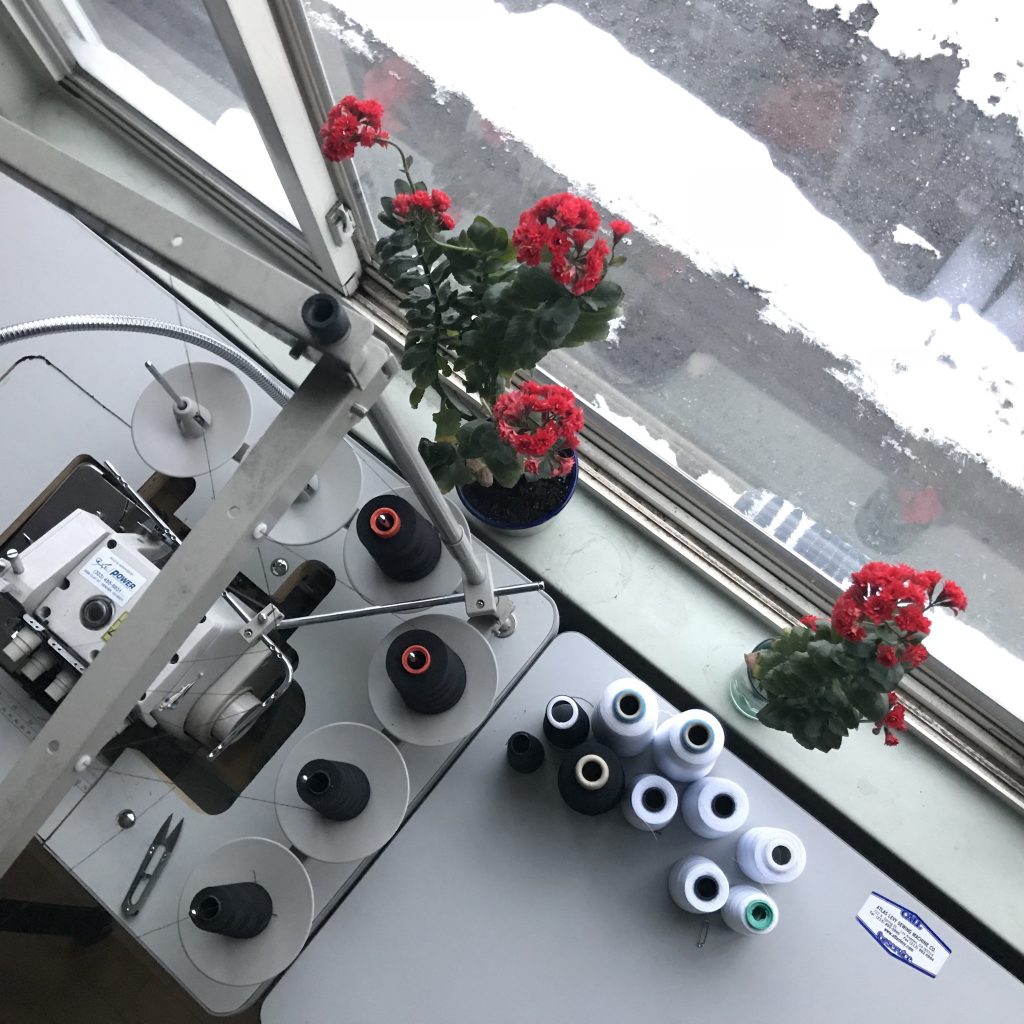
I’ve long felt that my role in the needle trade has been a contradiction of the economics of supply and demand. Solid sewing skills of the caliber I possess are increasingly difficult to find, and demand has persisted throughout my evolution of seamstress for hire to prototype engineer. However, the oppression of an ever-present price ceiling has been a source of personal frustration for years; I have allowed it to impose limitations on my earning potential and have experienced the sensitivities first-hand from alterations and custom clothing customers alongside pressure from brands in the fashion industry, as the majority of spenders I’ve encountered do not attribute a high enough value to the finished garments for me to continue to survive, much less thrive in the labor intensive business of contract sewing.
As a producer near the bottom of the supply chain, I realize the upper level price sensitivity is justified. Retailers need to keep their cost of goods in line with target margins and price points. I’ve championed the efforts of many independent brands to produce marketable collections over the years and counseled designers on prudent business strategies, only to recently come to grips that I structured my own business in ways that have been detrimental to my personal wellbeing and bottom line.
I’ve found it challenging to command an adequate hourly rate for sewing that covers the operational costs of tools, machines, and physical space in addition to compensating for the time and skills required to make a quality product while simultaneously juggling management tasks. I’m sad to say my optimism has waned and I now struggle to advocate sewing as an appealing or lucrative career path in many cases – particularly when you take into account how difficult it is to expand a solo sewing business into a profitable enterprise as a domestic sewing contractor.
Demand has surged with the rise of indie fashion labels, but it’s a daunting task to find reliable sewing assistants to who can manage the task of crafting a quality garment from start to finish without needing extensive and costly training, much less assemble a solid team of dedicated stitchers to manufacture clothing on demand, and then pay everyone a living wage in a city like Denver. The majority of production sewers in the US end up being immigrants, often with English language barriers, and are typically paid very low wages to do repetitive work. I used to be passionate about training up the next generation of domestic garment workers, but lately I’ve questioned a different approach altogether. If there is a way to make the contract apparel sewing business model work here in urban America, I have yet to figure it out, and almost certainly it will require the implementation of new technologies and systems in an antiquated industry that is historically slow to change. Many of the people who currently provide Made in America sewing services are nearing retirement age, and I predict it will be even harder to find local skilled sample makers and small batch sewers in the near future.
From my earliest days of repurposing garments and bohemian patchwork, to reverse engineering mass produced items to derive technical pattern and construction details, to a bachelor’s degree and brief stint in the world of costume alterations and construction, to small batch production sewing for independent designers, to custom tailoring, to mentorship of a string of sewing apprentices in my home studio, to patternmaker and sample sewer for dozens of startups, to sewing factory owner, manager, and trainer of a small team of production sewers, and ultimately a return to solopreneur sample and custom stitcher, my hands have crafted countless garments and stitched up dreams of designers too numerous to tally.
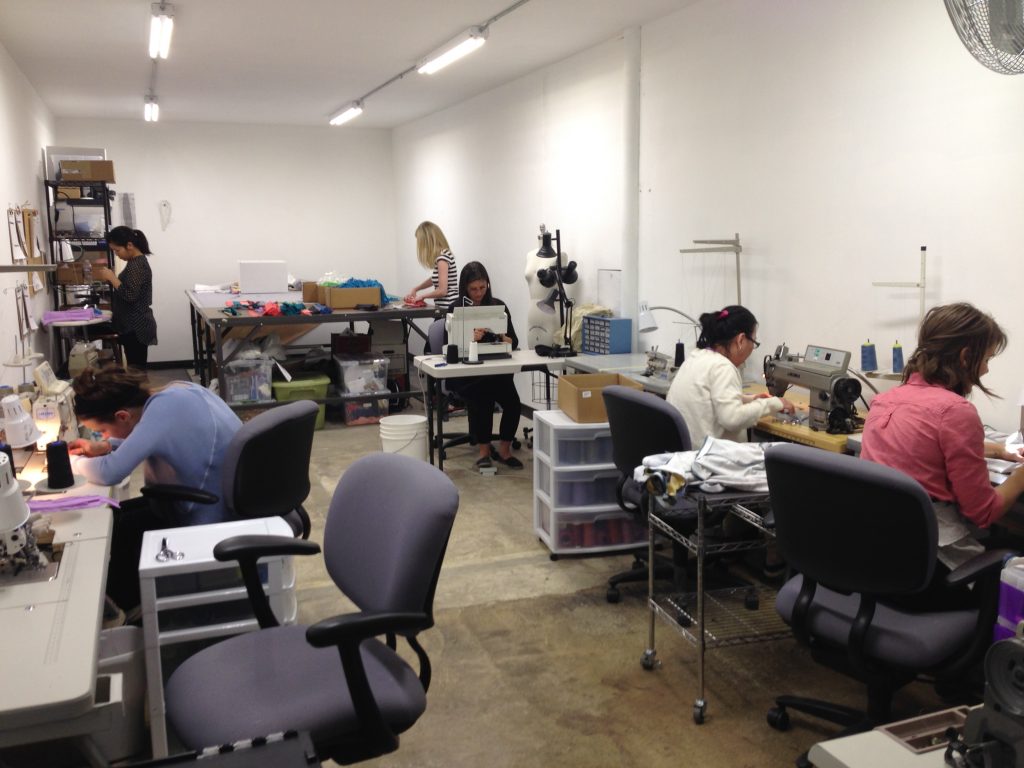
Malcolm Gladwell has been one of my favorite authors since I was introduced to his book The Tipping Point as required reading in one of my college courses in arts management. He subsequently brought popularity to the idea of the 10,000 Hour Rule in his book Outliers a dozen years ago. The 10,000 Hour Rule surmises that to achieve expert level in a field, one must put in consistent effort over time. The practice of 20 hours per week for 10 years comes out to a total of 10,000 hours, a benchmark which he equated to the time required to achieve mastery of a subject or skill. In the years since Gladwell brought popularity to this rule, it’s been debunked by several scientific studies as an oversimplification that doesn’t take into account deliberate practice, genetic predisposition, and timing – but still, inarguably, substantial practice time is required in order to advance one’s skills, though sum hours can vary dramatically.
Based on some rough arithmetic, I surpassed 10,000 hours of hands-on sewing many years ago and kept right on stitching for a living. There have been plenty of years where I sewed 30-50 hours per week on average, including this past year when I finally decided I’ve had enough of the constant whir of the flywheel drowning out other melodies on the soundtrack of my life. I have an appreciation for experimental music constructed out of captured atmospheric sounds and all (see Martin Messier’s Sewing Machine Orchestra), BUT – I clearly see how sometimes all one can hear is the noise. The senses overload and shut down. So. Much. Sewing. So little time.
Navigating burnout is a tremendous undertaking, particularly when faced with exhaustion and loss of motivation and passion. Your identity is sewn into the fibers of your being, and yet you find yourself unravelling as if a cat has become fascinated by the sensation of sinking their claws into your sweater, creating small snags that quickly become gaping holes once pulled, holes that are nearly impossible to stitch back together in a way that imperceptibly blends into the original design. Knitting and sewing stitches are not the same. Sometimes it is impossible to make a repair undetectable, and instead you are faced with a new challenge: an opportunity to incorporate other elements in an artistic fashion in order to extend the lifecycle and preserve the personal attachment you have to a specific article of clothing.
Sometimes it requires ripping your life apart at the seams and recrafting an entirely new ensemble altogether, blending salvaged bits alongside inspiring newfound textiles and trims. Will you incorporate a focus on sustainable materials? Is it even possible to avoid the use of synthetics? Will you choose contrasting thread for topstitching? Will it be domestically produced or manufactured overseas? Will it be a small batch specialty indie label with a high price point? Or will it exhibit the complex level of construction details made affordable by mass production within the global network of a corporate powerhouse? The possibilities are endless, but cost and lead time varies.
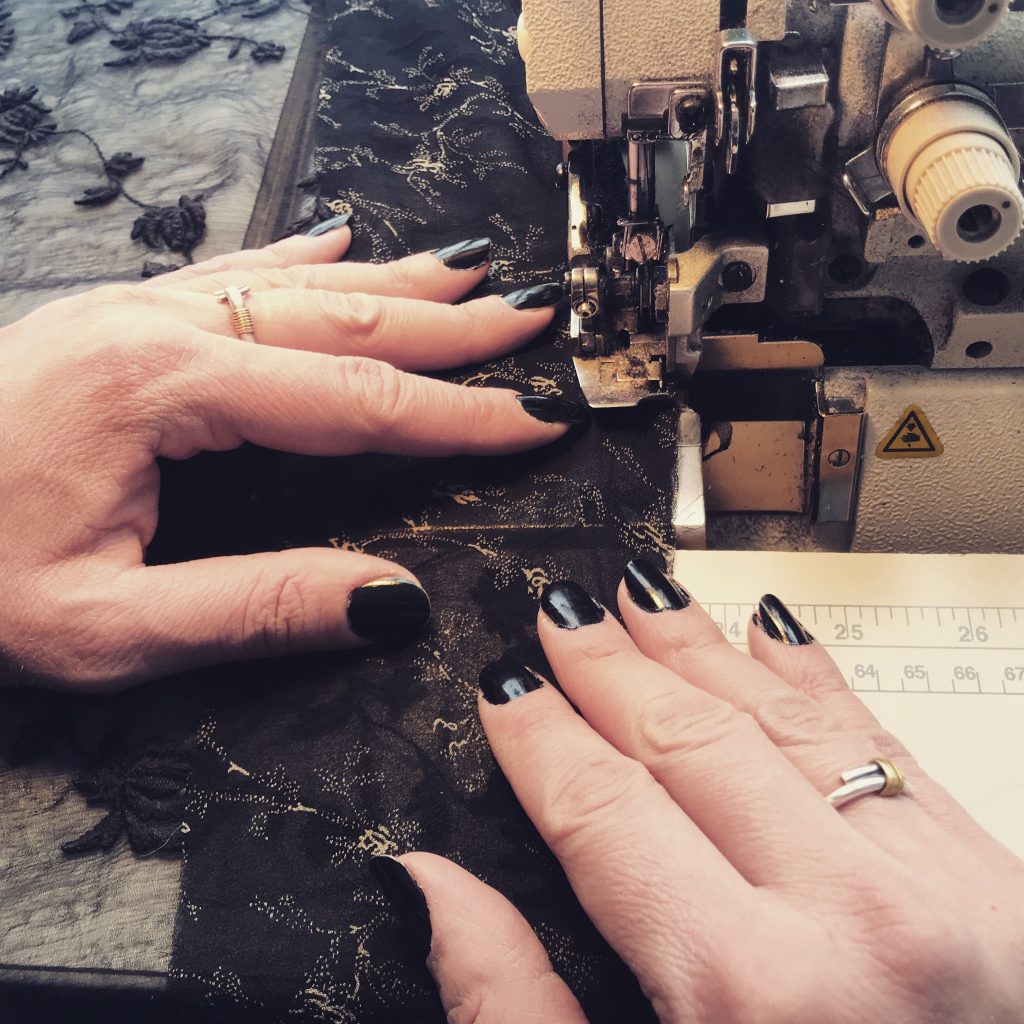
I’ve sewn initial prototype garments from a wide range of starting points; some designers barely give enough input to qualify as a creative force in the creation of a new style and just want to knock of an existing piece, or they don’t take the time to clearly outline their design in writing and prefer to just talk through the gist of an idea that may or may not be accompanied by a rough napkin sketch. On the other side of the spectrum, designers go to great lengths to define their sample requests by providing multi-page documents known as Tech Packs with specific measurements and trims outlined with technical sketches complete with callouts, the fashion industry’s version of a blueprint for building a house. My preference is to work with detail-oriented designers of the latter variety, who tend to be the product of a greater investment of time and energy into learning the ins and outs of the rag trade.
While designers can get away with the first approach and end up with a production ready pattern and sample after a few iterations, in general the quality and consistency of the information used to produce the latter’s styles results in higher odds of manufacturing a commercially successful product. Clear communication during the design phase also contributes to fewer rounds of sample iterations on average, saving the designer time and money in the long run.
Which brings us back to the proverb: a stitch in time saves nine.
Often interpreted to mean that one should take action now instead of procrastinating, since postponing a chore frequently leads to more work that could have been avoided, this idiom can be applied to many aspects of time management and future planning on micro and macro levels.
Some holes in your clothes appear due to threads breaking at a stress point of a seam. These are typically the easiest to mend, and if you catch them early enough, can often be stitched back together by hand or machine without altering the outer appearance of the garment. If left alone however, the task becomes more time consuming and not as easy to replicate the exact spacing, tension, color, and type of stitches that once existed. Worse-case scenario, the small hole is vulnerable to catching on something and growing larger, and fabric that rips and shreds beyond the seam line requires patching or darning or some other special treatment above and beyond the original sewing construction methods. Sometimes repairs necessitate making the garment smaller, and sometimes saving the garment requires far more effort than time or money warrants, and it ends up in the scrap heap.
Technologies are continuing to improve, and one day in the near future we will see more discarded clothes collected and recycled to capture and regenerate fibers in order to create new sustainable and renewable garments, but our disposable society has a long way to go if the fashion industry is ever to rid itself of the label of having one of the most polluting supply chains in the world.
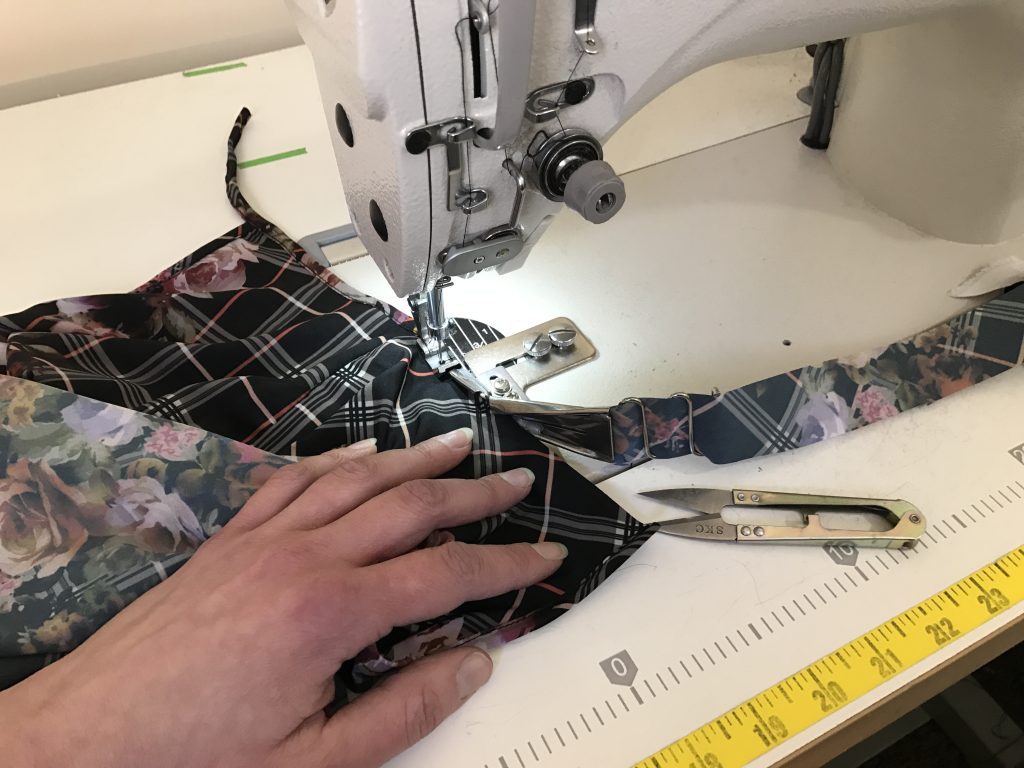
A stitch in time suggests we can craft a better future. A simpler one perhaps, or one with infinitely more possibilities than before should we make choices that produce time savings that can then be allocated to other creative and constructive pursuits. Just as the invention of the sewing machine freed up the average housewife for other pursuits, new habits and technologies used wisely can give us the gift of time.
In my case, I was spending too much time stitching everyone else’s clothes that my own were threadbare and falling apart. Which reminds me of another adage that hits close to home: the cobbler’s son has no shoes. I was so busy prioritizing everyone else’s needs that I didn’t have the energy to think about making any additional stitches in time that would lighten my own laundry load.
I finally came the realization at the start of summer 2019 that I needed to make some major changes in both my personal and professional life and started ripping into seams left and right. Sewing for a living felt like an oppressive chore, but I was dependent on it for income and pressured by client demands to continue. I struggled to balance my sense of obligation to others with a growing need to nurture myself and explore a path of greater fulfillment and potential.
Over the course of 4 months, I quit drinking alcohol, quit smoking cigarettes, put together a resume and portfolio for the first time in over a decade, told clients I didn’t want to continue to sew for them long term, applied for jobs, decided to move from a tiny mountain town back to the big city of Denver, walked away from a codependent romantic relationship after 3 years, uprooted my 7 year old daughter, and left the spectacular box canyon views of an apartment I loved to move in with a close friend and share an old house in the city, which meant living with a roommate and dog for the first time since my early 20’s. As far as dogs and roommates go, I can’t imagine a better pair to link up with during this transition, but it’s still yet another adjustment in a year of many changes.

By this point it was the beginning of September and I hadn’t made any headway with job applications, so I finished setting up my new sewing studio and reluctantly got back to work sewing orders that had stacked up while I relocated. I began to feel increasingly discouraged by getting seemingly nowhere with my job search, and I also felt like a failure professionally for spending so many years on the hands-on maker side of my work that I lacked other qualifications and experiences that I kept seeing in job listings.
For months I’d been questioning leaving the apparel industry altogether, as I began to consider that even entry level salaries for many other career paths would be more than I’d ever managed to pay myself. The unsettling reality is this: meager as my income was, I knew it was more than what many of the designers who’d struggled to pay me were paying themselves while trying to get their own businesses off the ground. Entrepreneurship is not for the faint of heart, particularly in the fashion industry, and I knew I possessed potential to do far more with my life.
Fast forward a few months to today and I am still battling burnout while sewing for several clients, but the circumstances are quickly evolving. I started freelancing part time as a patternmaker and technical developer at a large global apparel company and am regularly filling my days with a wider variety of professional pursuits than just sewing. I’m reconnecting with old friends and practicing new hobbies. I’ve introduced new habits such as writing daily, and as I explore new directions professionally that minimize or exclude sewing altogether, my overall state of mind is improving dramatically.
There is much more to the story as it continues to unfold, but a common thread in recent months has been to give time and attention to little behaviors and things that create a foundation for the new life I am building. My case is extreme; it’s not always possible or advisable to rip everything apart and start fresh. But I’ve learned a few things over the years about stitching, and deconstructing my own garment was the most straightforward approach I could identify. I feel confident I have the inherent skills to sew it back together. Even though I still don’t quite know how the revised garment will look or feel on me after all the major alterations, the style is already much improved. Fortunately, I’ve learned a thing or two about fitting clothes and have the tools and materials to make additional outfits from scratch if necessary.
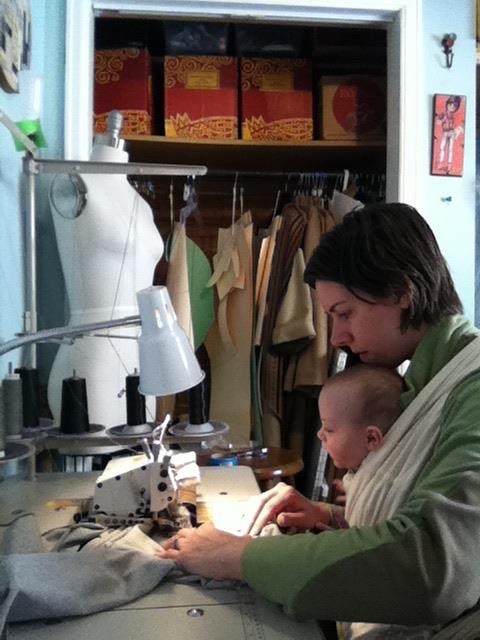
I’ve largely described my experiences thus far on a macro level, but a stitch in time can be applied on a micro level in many simple ways that can lead to a more orderly and efficient environment:
- Declutter, then tidy up daily. Studies suggest that 40% of house cleaning can be eliminated by getting rid of unnecessary clutter, and misplaced items cost the average person 10 minutes a day of searching. It takes less time and effort to keep things tidy than to have a massive project to clean up that keeps getting pushed off into the future. Plus, your mind tends benefit from being in a tidy environment, as feelings of procrastination and overwhelm take up valuable bandwidth.
- One-minute rule: Don’t postpone tasks that take less than a minute. Hang up your jacket, put the plate in the dishwasher, click unsubscribe on that mailing list you are no longer interested in following.
- Use a running grocery list and other to do list systems to keep track of what you need to restock or do as soon as you think about it, then you don’t have to allocate as much mental energy to recall something or deal with the consequences of forgetting altogether.
- Set up autopays and calendar reminders.
- Speak up. Ask questions, define boundaries, and communicate clearly up front to reduce time zapping confusion or conflict downstream. Saying no can make a dramatic stitch in time.
- Make a plan and schedule, then regularly review to identify where adjustments need to be made.
- Meditate
- Read
- Exercise
I’ll follow up shortly with detailed descriptions of some of the stitches I’ve been using; in fact, it seems a recommendation for how to put together an entire sewing kit is in order.
Another day, another stitch. What holes do you need to mend?
References:
Wikipedia: sewing machine https://en.wikipedia.org/wiki/Sewing_machine
Why do people say a stitch in time saves nine? Via Wonderopolis https://www.wonderopolis.org/wonder/why-do-people-say-a-stitch-in-time-saves-nine/
The Great Practice Myth: Debunking the 10,000 Hour Rule https://www.6seconds.org/2018/02/09/the-great-practice-myth-debunking-the-10000-hour-rule-and-what-you-actually-need-to-know-about-practice/
Is it a bad day, or is it burnout? https://www.mindful.org/is-it-a-bad-day-or-is-it-burnout/
The Future of Fashion is Circular, by Emily Farra for Vogue. 12.19.19 https://www-vogue-com.cdn.ampproject.org/c/s/www.vogue.com/article/sustainability-2020s-circular-fashion-textile-recycling/amp
Less Clutter is Less Housework https://iquitclutter.com/less-clutter-less-housework/


I am enjoying your posts. It is making me think of my life and what is. Next for me.
Happy to hear these words are sparking thoughts!
So good and so on point. Thank you for the reminder of wonderful ways to keep it all in the clear ❤️
You’re welcome! Clarity is so important.
Such amazing insights! I am quite sure as you deconstruct, analyze, turn things inside and outside and then begin the process of reconstruction, you will create a beautiful masterpiece! Nothing is ever wasted, as you have alluded to. I am excited to see the evolution that is taking place!
Thank you! This is a good reminder to enjoy the creative process of reconstruction.